Blocks shown in figure have been placed on a smooth horizontal surface and mass of (n+1)th block is 120 times the mass of nth block (where n=1,2,3,4,….). The first block is given an initial velocity u towards the second block. All collision are head on elastic collisions. If u=10m/s then how many blocks must be kept so that the last one acquires speed equal to or greater than the escape speed (=11.0kms−1)
[Take log10(4021)=0.28andlog10(11)=1.04]
![Blocks shown in figure have been placed on a smooth horizontal surface and mass of (n + 1)^(th) block is (1)/(20) times the mass of n^(th) block (where n=1,2,3,4,….). The first block is given an initial velocity u towards the second block. All collision are head on elastic collisions. If u = 10 m//s then how many blocks must be kept so that the last one acquires speed equal to or greater than the escape speed (=11.0 km s^(-1)) [Take log(10)((40)/(21))=0.28 and log(10)(11)=1.04]](https://d10lpgp6xz60nq.cloudfront.net/physics_images/IJA_PHY_V01_C05_E01_032_Q01.png)
The correct Answer is:12
Step by step video, text & image solution for Blocks shown in figure have been placed on a smooth horizontal surface and mass of (n + 1)^(th) block is (1)/(20) times the mass of n^(th) block (where n=1,2,3,4,….). The first block is given an initial velocity u towards the second block. All collision are head on elastic collisions. If u = 10 m//s then how many blocks must be kept so that the last one acquires speed equal to or greater than the escape speed (=11.0 km s^(-1)) [Take log_(10)((40)/(21))=0.28 and log_(10)(11)=1.04] by Physics experts to help you in doubts & scoring excellent marks in Class 11 exams.
Updated on:21/07/2023Topper's Solved these Questions
Similar Questions
Infinite blocks each of mass M are placed along a straight line with a distance d between each of them. At t = 0 the leftmost block is given a velocity V towards right. The coefficient of frication between any block and the surface is μ and all collisions are elastic. Let the total number of collisions be N then N is

View SolutionA block of mass 10kg is placed on a horizontal surface as shown in the figure and a force F=100N is applied on the block as shown, in the figure. The block is at rest with respect to ground. If the contact force between block and ground is 25n (in Newton) then value of n is : (Takeg=10m/s2)
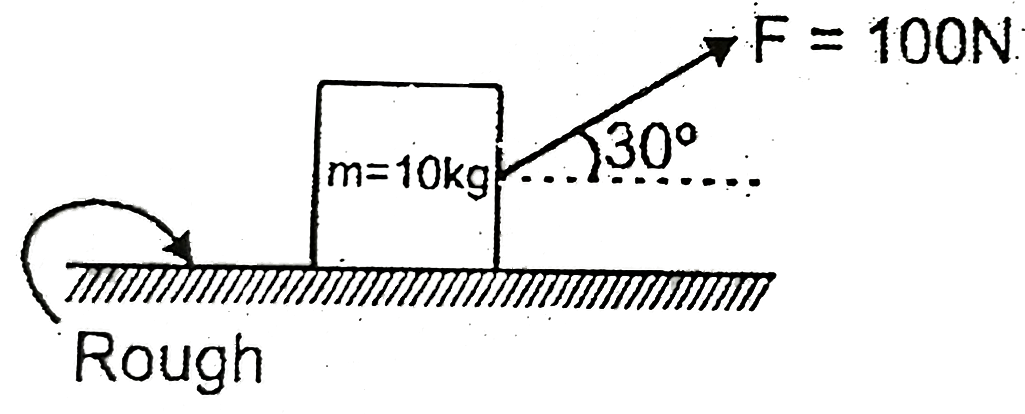
View Solution
Knowledge Check
A long block A is at rest on a smooth horizontal surface. A small block B whose mass is half of mass of A is placed on A at one end and is given an initial velocity u as shown in figure. The coefficient of friction between the blocks is μ.
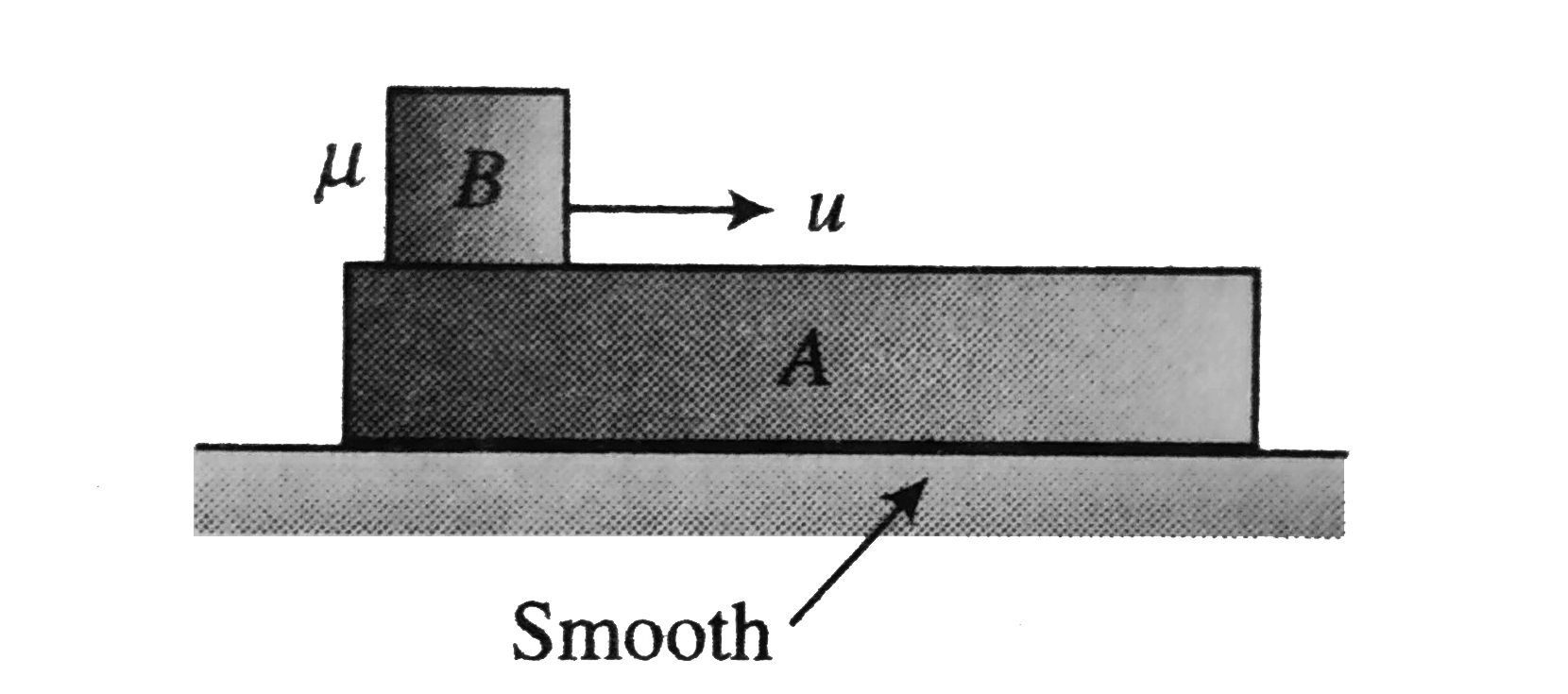 A(a) Finally both move with a common velocity 2u/3.B(b) Acceleration of B relative to A initially is 3μg/2 towards left.C(c) Magnitude of total work done by friction is equal to the final kinetic energy of the system.D(d) The ratio of initial to final momentum of the system is 1.
A(a) Finally both move with a common velocity 2u/3.B(b) Acceleration of B relative to A initially is 3μg/2 towards left.C(c) Magnitude of total work done by friction is equal to the final kinetic energy of the system.D(d) The ratio of initial to final momentum of the system is 1.A set of n identical cubical blocks lies at rest parallel to each other along a line on a smooth horizontal surface. The separation between the near surfaces of any two adjacent blocks is L . The block at one end is given a speed v towards the next one at time 0 t . All collisions are completely inelastic, then
AThe last block starts moving at t=(n−1)LvBThe last block starts moving at t=n(n−1)L2vCthe centre of mass of the system will have a final speed vDThe centre of mass of the system will have a final speed vn.Three blocks are placed on smooth horizontal surface and lie on same horizontal straight line. Block 1 and block 3 have mass m each and block 2 has mass M(M>>m). Block 2 and block 3 are initially stationary, while block 1 is initially moving towards block 2 with speed v as shown. Assume that all collisions are head on and perfectly elastic. What value of M/m ensures that block 1 and block 3 have the same final speed?
 A5+√2B5−√2C2+√5D3+√5
A5+√2B5−√2C2+√5D3+√5
A block of mass √3/10kg is placed on a rough horizontal surface as shown in the figure. A force of 1N is applied at one end of the block and the block remains stationary. The normal force exerted by the sruface on the block acts(g=10m/s2)
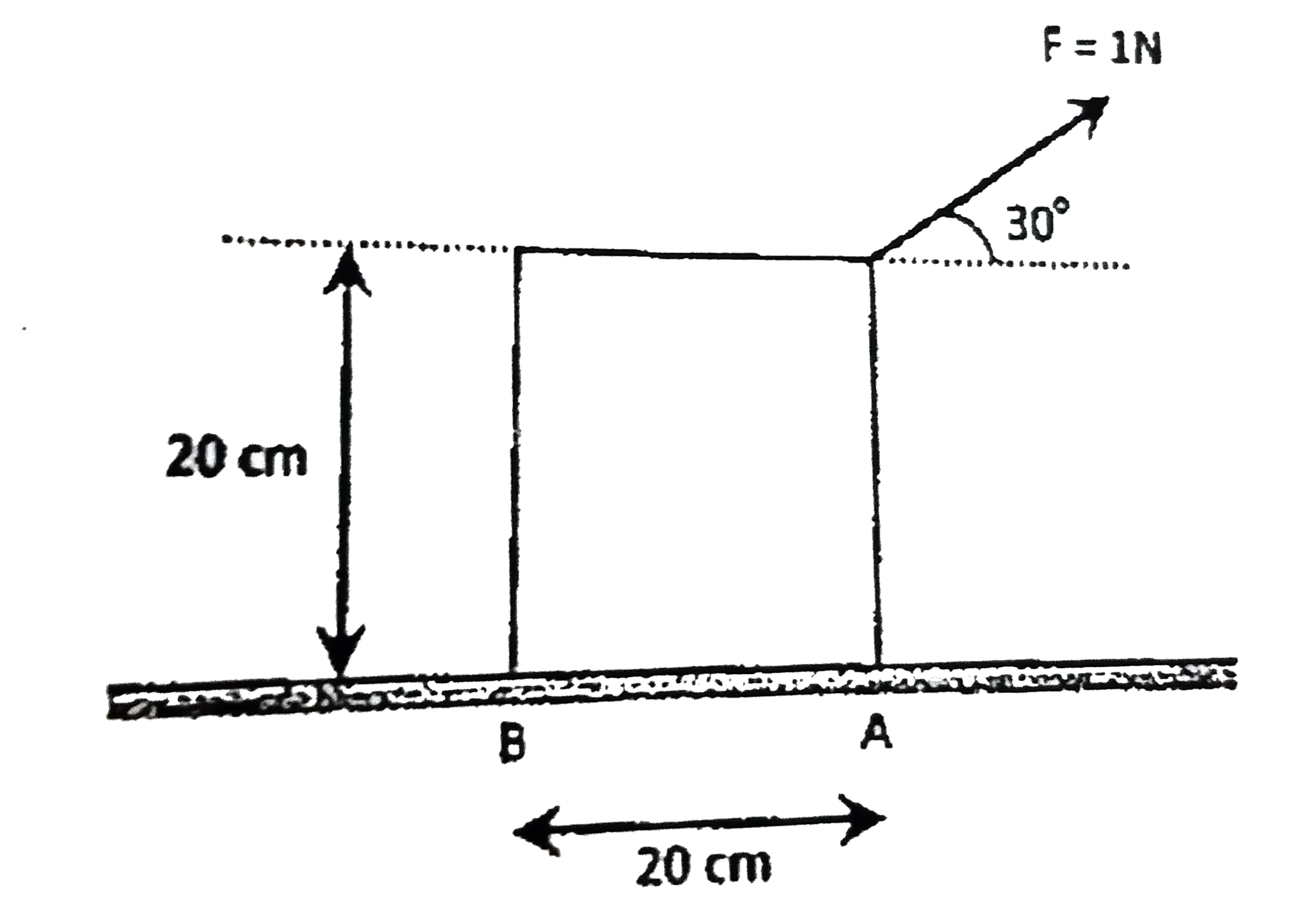
View SolutionA smooth washer impinges at a velocity 'v' on a group of three smooth identical blocksresting on a smooth horizontal surface as shown in fig. Mass of each block is equal to mass of the washer. The diameter of the washer and its height are equal to edge of the block. The velocity of blocks (2) and (3) after collision is
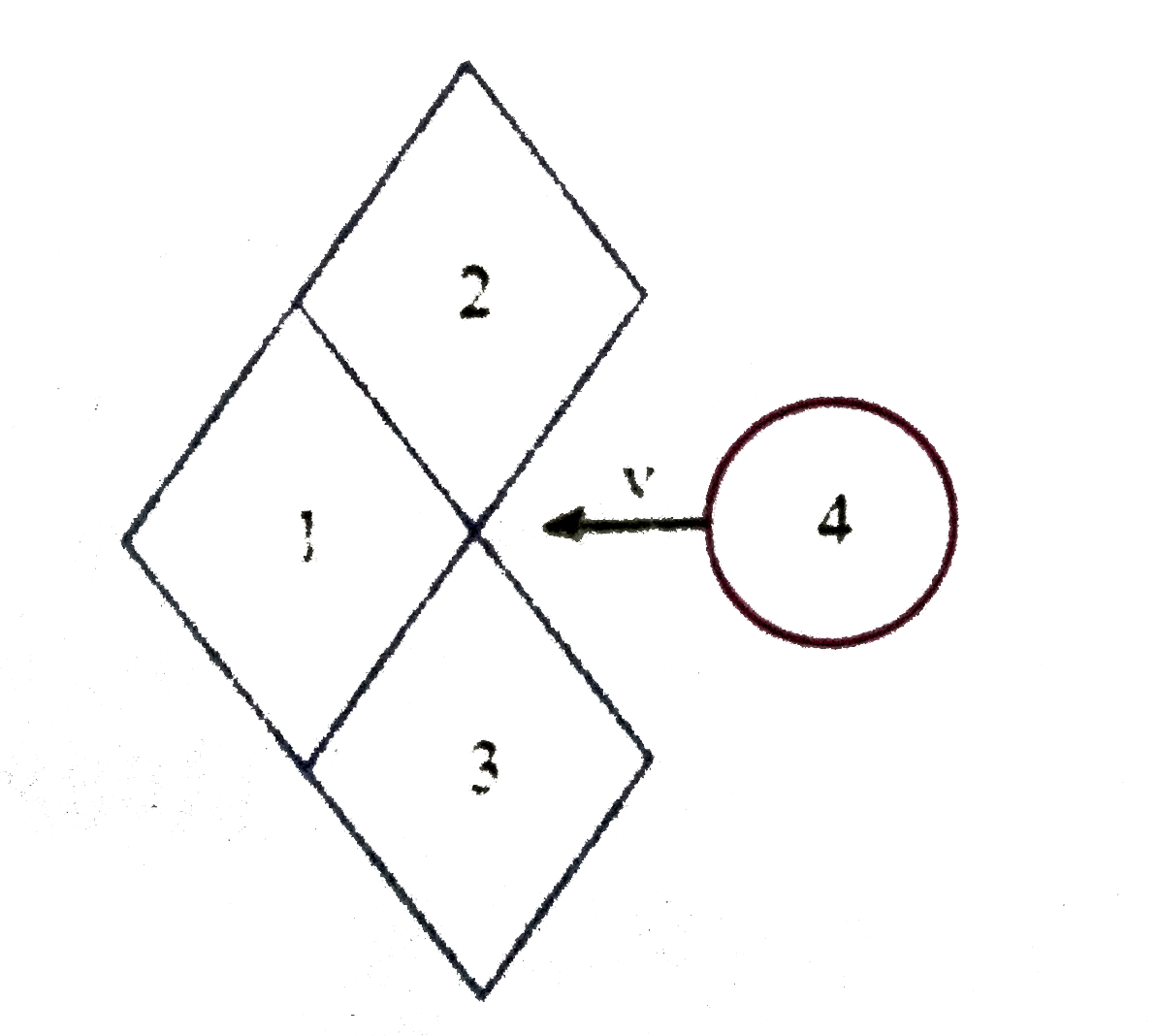
View SolutionThe right block in figure moces at a speed V towards the left block placed in equilibrium. All the surfaces are smooth and all the collisions are elastic. Find the time period motion. Neglect the width of the blocks.

View SolutionThe right block in figure moces at a speed V towards the left block placed in equilibrium. All the surfaces are smooth and all the collisions are elastic. Find the time period motion. Neglect the width of the blocks.

View SolutionTwo blocks of masses 1 kg and 2 kg are placed in contact on a smooth horizontal surface as shown in fig. A horizontal force of 6N is applied on a 1-kg block. Find the force of interaction of the blocks.
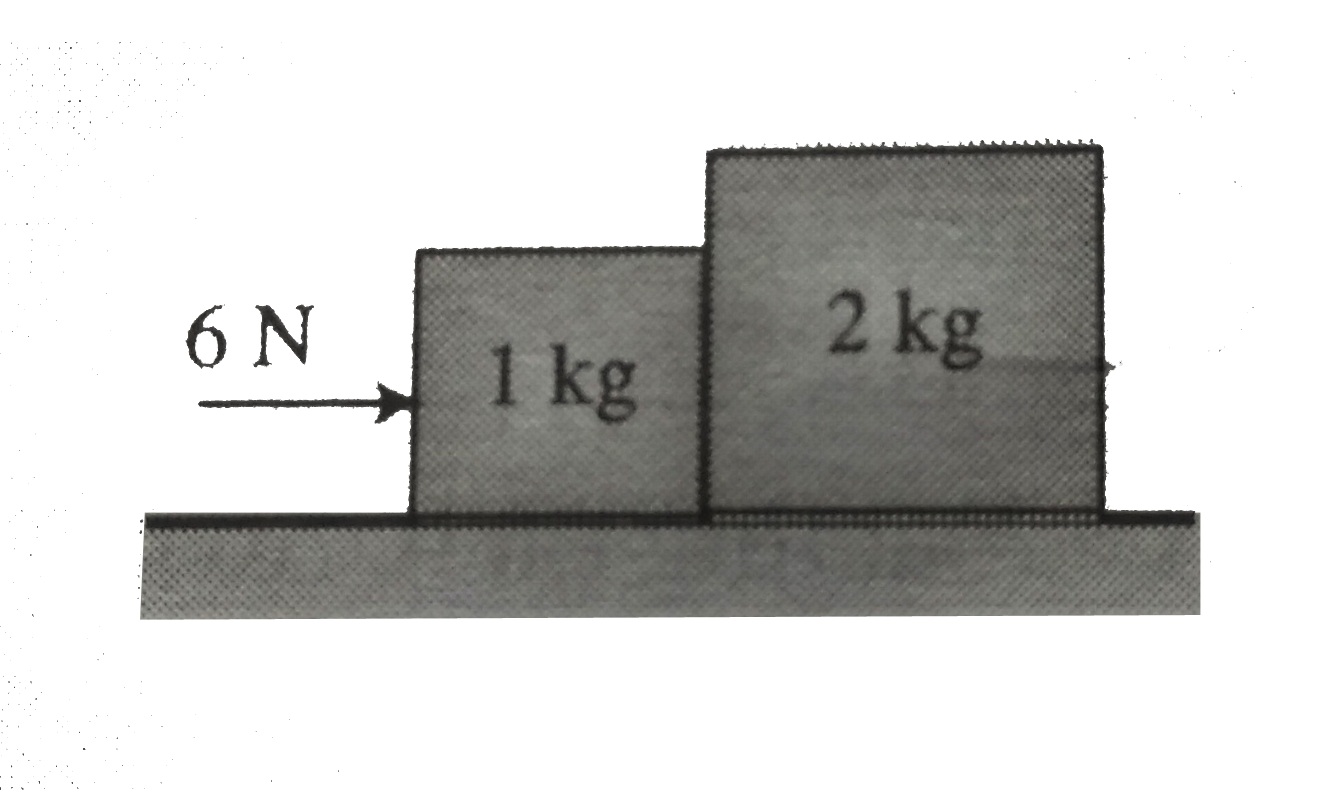
View Solution
